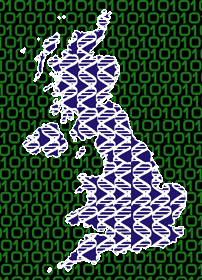
This is a crosspost from the Sanger Institute blog.
Genomic medicine promises to tailor patient care through ‘stratified’ medicine, in which information from their genome signatures can be used to target drugs more effectively (for example during cancer treatment) and to administer them more safely. Our genome sequence information will also be used to improve the diagnosis of rare diseases, and to ultimately provide information that allows us to adapt our lifestyles to avoid diseases to which we may have an increased predicted risk.
The report contains a chapter on pathogen genomics written by a diverse group of experts. Sequencing pathogen genomes and obtaining information that leads to clinical or infection control decisions is relatively easy in comparison with sequencing and interpretation of human genomes because of their small size. This means that pathogen sequencing can be done using a small benchtop instrument in any large hospital laboratory, making this widely accessible in the future. This has the potential to revolutionise the way that diagnostic microbiology laboratories analyse samples from patients with suspected infectious diseases, and provide a ‘stratified’ approach to the way that treatment is prescribed.
Sequencing technologies have already been used in microbiology laboratories for some years to target drug treatment in people with HIV infection. The virus can rapidly mutate, which can lead it to becoming resistant to the effects of anti-viral drugs and sequencing of HIV to detect this is the standard of care. But the range of diseases to be tackled by sequencing technologies is set to increase, a notable example being tuberculosis. In people who are infected with drug-resistant TB, sequencing the TB genome can reduce the time taken before effective treatment is given by several weeks or even months. The sequence information can also be used to confirm whether the patient is part of an outbreak or not.
Another high-profile case described in the chapter is the use of pathogen genomics during the Ebola outbreak in West Africa. This allowed maps of virus spread to be constructed, which were used to assist frontline workers to identify and control where virus transmission was occurring. Future epidemics and pandemics will require the rapid implementation of pathogen genomics.
The chapter also highlights the current barriers to bringing sequencing to the clinic, as well as giving suggestions to policy makers on the need for coordination of services, and the important of data sharing to gain the greatest benefit to human health.
Using genomics in the clinic will require a deeper understanding of how different bacteria are distributed around the country and when to decide that a pattern of bacterial relatedness confirms transmission on the ward or in the community. It will also need data on what genetic variants are associated with antibiotic resistance and with different outcomes of disease. Researchers at the Sanger Institute, including the group of Julian Parkhill, along with Sharon Peacock and her team have been working over the last few years to build this knowledge, and create the large genetic databases that will be necessary to interpret genomic data in the clinic.
They have sequenced many thousands of bacterial genomes including E. coli, MRSA, Klebsiella and others from surveys across the UK and globally. These have been used to build a picture of what strains are where, and how rapidly they move from place to place. They have used antibiotic resistance measurements to search the genomes for variants that code for resistance, and calculated how accurately we can predict the resistance of new isolates using these signatures. They have looked at how the genomes of bacteria vary during an infection, how that variation is transmitted to new patients, and have discovered new genetic variants that are associated with virulence. This foundational work enables and helps to underpin future developments in medical microbiology.
Related publication:
Chief Medical Officer annual report 2016: Generation Genome
Professor Dame Sally Davies’s eighth independent report to government as CMO looks at how genomics can improve health and prevent ill-health.
Further links:
- Sharon Peacock’s Sanger Institute webpage.
- Sharon Peacock’s group webpages at the London School of Hygiene and Tropical Medicine and the University of Cambridge.
- Sanger Institute’s official response to the CMO annual report 2016: Generation Genome.
Comments